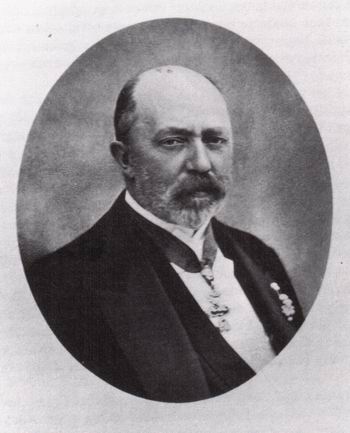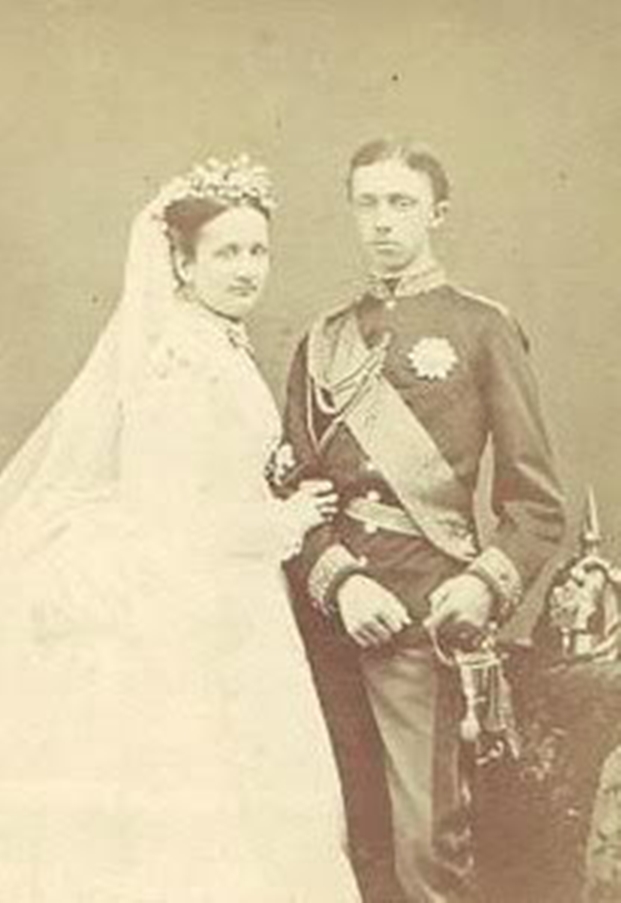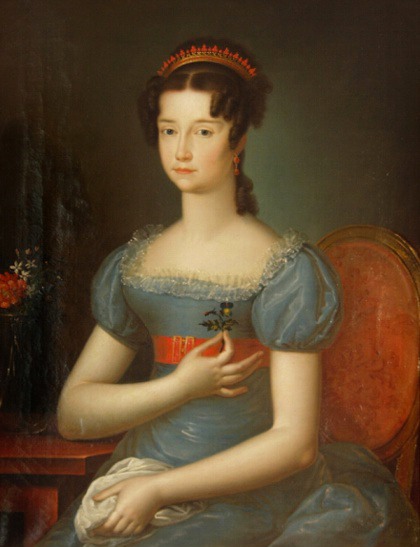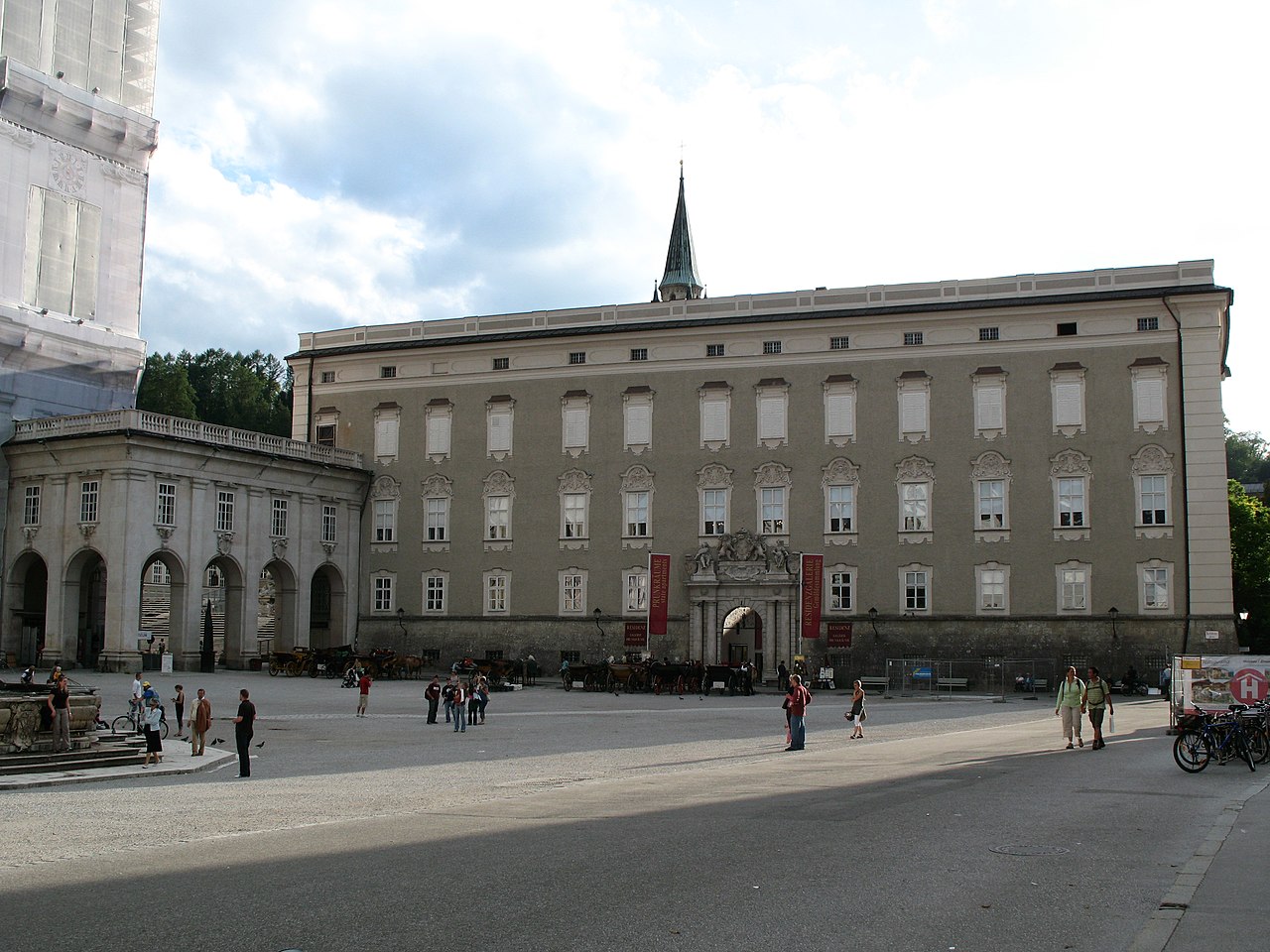by Susan Flantzer
© Unofficial Royalty 2021
The Duchy of Parma was in today’s northwest Italy and came into existence in 1545 when Pope Paul III made his illegitimate son Pier Luigi Farnese the Duke of Parma and Piacenza, territories that previously were a part of the Papal States. The House of Farnese reigned until 1731 when the male line went extinct. The duchy passed to Felipe V, King of Spain from the Spanish House of Bourbon whose second wife Elizabeth Farnese was the Farnese heiress. Felipe V made Carlos, his only son with Elizabeth Farnese, the Duke of Parma. However, in 1738, Felipe V traded the Duchy of Parma to the House of Habsburg-Lorraine for the Kingdom of Naples and Sicily and Carlos became King of Naples and Sicily.
In 1748, the Duchy of Parma was ceded back to the Bourbons. Infante Felipe of Spain became Duke of Parma and was the founder of the House of Bourbon-Parma, a cadet branch of the Spanish House of Bourbon. In 1796, the Duchy of Parma was occupied by French troops under Napoleon Bonaparte. It remained in French hands until the defeat of Napoleon in 1814 when the duchy was given to Napoleon’s second wife, Marie-Louise of Habsburg-Lorraine. She reigned until her death in 1847 when the Duchy of Parma was restored to the House of Bourbon-Parma. In 1859, the Duchy of Parma was abolished during the Italian unification movement. It was merged with the Kingdom of Sardinia as part of the unification of Italy. In 1861, Vittorio Emanuele II, King of Sardinia was proclaimed the first King of the new, united Kingdom of Italy.
********************

Roberto, Duke of Parma; Credit – Wikipedia
Roberto I was the last Duke of Parma. As a not-quite-six-year-old, he succeeded his father who was assassinated, and then lost his throne five years later due to the Italian unification movement. Roberto Carlo Luigi Maria was born in Florence, Grand Duchy of Tuscany, now in Italy, on July 9, 1848. He was the second of the four children and the elder of the two sons of Carlo III, Duke of Parma and Louise Marie Thérèse of France. Roberto’s paternal grandparents were Carlo II Ludovico, Duke of Parma and Maria Teresa of Savoy (daughter of King Vittorio Emanuele I of Sardinia) His maternal grandparents were Charles Ferdinand, Duke of Berry (son of King Charles X of France) and Marie Carolina of Bourbon-Two Sicilies (daughter of King Francesco I of the Two Sicilies).

Roberto with his mother and siblings in 1860, left to right: Roberto, his mother Louise Marie Thérèse of France, his sister Margherita, his brother Enrico, and his sister Alice; Credit – Wikipedia
Roberto had three siblings:
- Princess Margherita of Bourbon-Parma (1847 – 1893), married Infante Carlos, Duke of Madrid, had five children
- Princess Alice of Bourbon-Parma (1849 – 1935), married Ferdinando IV, Grand Duke of Tuscany, had ten children
- Prince Enrico, Count of Bardi (1851 – 1905), married (1) Princess Maria Luisa of Bourbon-Two Sicilies, died three months after marriage (2) Infanta Adelgundes of Portugal, Duchess of Guimarães, no children
On March 26, 1854, while taking his usual afternoon walk through the streets of Parma, Roberto’s father Carlo III, Duke of Parma was attacked by two men who stabbed him in the stomach. After much suffering, which he endured bravely, thirty-one-year-old Carlo III, Duke of Parma died the following evening, March 27, 1854. Ireneo Bochi and Antonio Carra, Carlo’s murderers, escaped prosecution. They were briefly arrested but since they looked similar, witnesses were confused and deemed unreliable. Bochi and Carra did not act for political reasons but were hired assassins. However, exactly who paid them remains unknown.

Roberto in 1860; Credit – Wikipedia
Six-year-old son Roberto became Duke of Parma with his mother Louise Marie Thérèse as regent but he had a short reign. In 1859, the Duchy of Parma was abolished during the Italian unification movement. It was merged with the Kingdom of Sardinia as part of the unification of Italy. In 1861, Vittorio Emanuele II, King of Sardinia was proclaimed the first King of the new, united Kingdom of Italy. Roberto was the titular Duke of Parma and the pretender to the throne until he died in 1907.

Château de Chambord in France which Roberto inherited from his maternal uncle; Credit – By Benh LIEU SONG – Own work, CC BY-SA 3.0, https://commons.wikimedia.org/w/index.php?curid=22654063
Despite losing his throne, Roberto and his family had considerable wealth and traveled in a private train of more than a dozen cars. He had several residences including Schloss Schwarzau (link in German) in Schwarzau am Steinfeld, Austria, Villa Borbone delle Pianore (link in Italian) in Capezzano Pianore, Italy, and Château de Chambord in Chambord, Centre-Val de Loire, France which he inherited from his maternal uncle Prince Henri, Duke of Bordeaux, Count of Chambord.

Roberto and Maria Pia on their wedding day; Credit – Wikipedia
Roberto’s fortune made him a desirable husband but his half-first cousin once removed Princess Maria Pia of Bourbon-Two Sicilies was chosen as his bride. Maria Pia was the daughter of Ferdinando II, King of the Two Sicilies and his second wife Maria Theresa of Austria. The couple was married in Rome, Italy on April 5, 1869.

Maria Pia and her son Elias in 1881; Credit – Wikipedia
Roberto and his first wife Maria Pia of Bourbon-Two Sicilies had twelve children. Six of the children were mentally disabled, two died in infancy, and one was stillborn. Maria Pia, aged 33, died of puerperal fever (childbed fever) on September 29, 1882, in Biarritz, France a week after giving birth to her last child, a stillborn son.
Roberto and Maria Pia’s children:
- Princess Marie Louise of Bourbon-Parma (1870 – 1899), married Ferdinand I, Prince of Bulgaria (later Tsar), had four children including Tsar Boris I of Bulgaria,
- Ferdinando, Prince of Piacenza (born and died 1871 ), died in infancy
- Princess Luisa Maria of Bourbon-Parma (1872 – 1943), unmarried, mentally disabled
- Enrico, Titular Duke of Parma (1873 – 1939), unmarried, mentally disabled, his brother Elias took up the role as regent and Head of the House of Bourbon-Parma
- Princess Maria Immacolata of Bourbon-Parma (1874 – 1914), unmarried, mentally disabled
- Giuseppe, Titular Duke of Parma (1875 – 1950), unmarried, mentally disabled, his brother Elias continued his role as regent and Head of the House of Bourbon-Parma
- Princess Maria Teresa of Bourbon-Parma (1876 – 1959), unmarried, mentally disabled
- Princess Maria Pia of Bourbon-Parma (1877 – 1915), unmarried, mentally disabled
- Princess Beatrice of Bourbon-Parma (1879 – 1946), married Count Pietro Lucchesi-Palli, had four children
- Elias, Titular Duke of Parma (1880 – 1959), married Archduchess Maria Anna of Austria, had eight children, from 1907 to 1950, he served as regent for the claims of his two older disabled brothers, Head of the House of Bourbon-Parma
- Princess Maria Anastasia of Bourbon-Parma (born and died 1881), died in infancy
- Prince Augusto of Bourbon-Parma (stillborn 1882)

Maria Antonia in the late 1890s; Credit – Wikipedia
On October 15, 1884, at Schloss Fischorn (link in German) in Zell am See, Austria, Roberto married Infanta Maria Antonia of Portugal, the daughter of the deposed Miguel I, King of Portugal and Adelaide of Löwenstein-Wertheim-Rosenberg.
Roberto and his second wife Maria Antonia of Portugal had twelve children:
- Princess Maria della Neve Adelaide of Bourbon-Parma (1885 – 1959), a Benedictine nun at the Monastery of Solesmes, France
- Prince Sixtus of Bourbon-Parma (1886 – 1934), married Hedwige de La Rochefoucauld, had one daughter
- Xavier, Titular Duke of Parma (1889 – 1977), married Madeleine de Bourbon-Busset, had six children including Carlos Hugo, Titular Duke of Parma who married and divorced Princess Irene of the Netherlands, the Carlist claimants to the Spanish throne descend through this line
- Princess Francesca of Bourbon-Parma (1890 – 1978), a Benedictine nun at the Monastery of Solesmes, France
- Princess Zita of Bourbon-Parma (1892 – 1989), married Karl I, Emperor of Austria, had eight children
- Prince Felix of Bourbon-Parma (1893 – 1970), married Grand Duchess Charlotte of Luxembourg, had six children including Grand Duke Jean of Luxembourg
- Prince René of Bourbon-Parma (1894 – 1962), married Princess Margrethe of Denmark, had four children including Princess Anne of Bourbon-Parma who married King Michael I of Romania
- Princess Maria Antonia of Bourbon-Parma (1895 – 1937), a Benedictine nun at the Monastery of Solesmes, France
- Princess Isabella of Bourbon-Parma (1898 – 1984), unmarried
- Prince Luigi of Bourbon-Parma (1899 – 1967), married Princess Maria Francesca of Savoy, had four children
- Princess Enrichetta of Bourbon-Parma (1903 – 1987), unmarried, hearing disabled
- Prince Gaetano of Bourbon-Parma (1905 – 1958), married and divorced Princess Margarete of Thurn and Taxis, had one daughter

Roberto with his family in 1906; From left to right, first row: Maria Immacolata, Maria Antonia, Isabella, Roberto, Enrichetta, Luigi, Gaetano, Roberto’s second wife Maria Antonia, René, Zita. From left to right, second row: Francesca, Maria Pia, Luisa Maria, Maria Adelaide, Maria Teresa, Giuseppe, Xavier, Enrico, Sixto, Felix; Credit – Wikipedia
Roberto I, former Duke of Parma died, aged 59, at the Villa Borbone (link in Italian) in Viareggio, Kingdom of Italy, on November 16, 1907. He was buried in the chapel at the Villa Borbone in Viareggio, Italy. His second wife Maria Antonia of Portugal survived him by 52 years, dying on May 14, 1959, aged 96, at Berg Castle in Colmar-Berg, Grand Duchy of Luxembourg. She was buried in the chapel at Schloss Puchheim (link in German) in Attnang-Puchheim, Austria.

Tomb of Robert I, Duke of Parma; Credit – www.findagrave.com
Four months after Roberto’s death, the Grand Marshal of the Austrian court declared six of the children from his first marriage legally incompetent due to their severe mental disability at the request of his widow Maria Antonia. Elias, Roberto’s youngest son from his first marriage became the legal guardian of his six disabled elder siblings, served as regent for the claims of his two older disabled brothers and as Head of the House of Bourbon-Parma, and was Titular Duke of Parma from 1950 – 1959.
This article is the intellectual property of Unofficial Royalty and is NOT TO BE COPIED, EDITED, OR POSTED IN ANY FORM ON ANOTHER WEBSITE under any circumstances. It is permissible to use a link that directs to Unofficial Royalty.
Works Cited
- Almanachdegotha.org. 2021. Duchy of Parma – House of Bourbon-Parma. [online] Available at: <http://www.almanachdegotha.org/id29.html> [Accessed 11 October 2021].
- En.wikipedia.org. 2021. Infanta Maria Antónia of Portugal – Wikipedia. [online] Available at: <https://en.wikipedia.org/wiki/Infanta_Maria_Ant%C3%B3nia_of_Portugal> [Accessed 18 October 2021].
- En.wikipedia.org. 2021. Princess Maria Pia of Bourbon-Two Sicilies (1849–1882) – Wikipedia. [online] Available at: <https://en.wikipedia.org/wiki/Princess_Maria_Pia_of_Bourbon-Two_Sicilies_(1849%E2%80%931882)> [Accessed 18 October 2021].
- En.wikipedia.org. 2021. Robert I, Duke of Parma – Wikipedia. [online] Available at: <https://en.wikipedia.org/wiki/Robert_I,_Duke_of_Parma> [Accessed 18 October 2021].
- Flantzer, Susan, 2021. Carlo III, Duke of Parma. [online] Unofficial Royalty. Available at: <https://www.unofficialroyalty.com/carlo-iii-duke-of-parma/> [Accessed 18 October 2021].
- Flantzer, Susan, 2021. Louise Marie Thérèse of France, Duchess of Parma, Regent of Parma. [online] Unofficial Royalty. Available at: <https://www.unofficialroyalty.com/louise-marie-therese-of-france-duchess-of-parma-regent-of-parma/> [Accessed 18 October 2021].
- It.wikipedia.org. 2021. Roberto I di Parma – Wikipedia. [online] Available at: <https://it.wikipedia.org/wiki/Roberto_I_di_Parma> [Accessed 18 October 2021].
- Louda, Jiri and MacLagan, Michael, 2002. Lines of Succession. New York: Barnes and Noble.
























